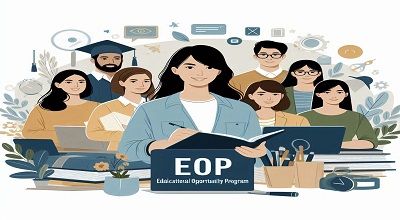EOP Means
EOP can stand for various things depending on the context. Here are a few common meanings for EOP:
- End of Production: This term is often used in manufacturing and refers to the point. At which a product or the manufacturing process is discontinued or no longer in operation.
- Emergency Operations Plan: In emergency management and disaster preparedness. An EOP is a plan that outlines how an organization. Government agencies will respond to various types of emergencies or disasters.
- End of Period: In finance and accounting, EOP can refer to the “End of Period.” Which is the point at which a financial reporting period. Such as a month or a quarter, comes to a close.
- End of Page: In computing and printing, EOP may stand for “End of Page.” Indicating the end of a printed or displayed page of information.
- Executive Office of the President: In the context of the United States government. EOP refers to the “Executive Office of the President.” Which includes various agencies and offices that support the President in carrying out their duties.
Please provide more context if you have a specific EOP in mind. There are many possible meanings for this acronym.
What is EOP teaching?
EOP in the context of education often stands for “Educational Opportunity Program.” The Educational Opportunity Program is a type of program in the United States. That is designed to provide access to higher education for individuals. Who come from disadvantaged backgrounds. Who may not meet traditional admission requirements?
EOP programs typically offer a range of support services to help students succeed academically and graduate from college. These services may include:
- Academic Support: Tutoring, study skills workshops, and academic advising to help students excel in their coursework.
- Financial Assistance: Financial aid and grants to assist with tuition, fees, and other educational expenses.
- Counseling and Guidance: Personal and career counseling to help students navigate the challenges of college life and plan for their future.
- Peer Mentorship: Connecting students with peer mentors who can provide guidance and support.
- Special Admissions Consideration: EOP programs may admit students who do not meet the typical admission criteria. But show promise and motivation to succeed.
- Workshops and Work-Study Programs: Opportunities for skill development. And part-time work to help students gain practical experience while attending school.
The specific services and eligibility criteria for EOP programs can vary from one institution to another. However, the overall goal is to increase access to higher education for individuals from underrepresented. Or disadvantaged backgrounds and support their academic success. EOP programs are typically found at colleges and universities. And they play a crucial role in promoting diversity and equity in higher education.
Who is eligible for EOP in CSU?
The eligibility criteria for the Educational Opportunity Program (EOP). The California State University (CSU) system may vary slightly from campus to campus. However, there are common eligibility requirements that are generally applicable across CSU campuses. It’s important to check with the specific CSU campus you are interested in for the most up-to-date information. Here are the typical eligibility criteria for EOP in CSU:
California Residency: Generally, you must be a California resident. Or an AB540 eligible student (a California Dream Act-eligible student) to be considered for EOP.
Low-Income Status: EOP is typically intended for students with a history of economic and educational disadvantages. You must meet specific income and asset criteria, which can vary by campus.
First-Generation College Student: Many EOP programs prioritize first-generation college students. Meaning neither of your parents or legal guardians earned a bachelor’s degree.
Academic Potential: While EOP aims to provide access to education for students. Who may not meet traditional admission criteria? You should still demonstrate the potential to succeed in college. Admission to EOP is often based on a combination of factors, including high school GPA. Standardized test scores (if applicable), and a personal statement or interview.
More read
Educational Disadvantage: You should be able to demonstrate. That you have faced educational disadvantages or challenges that have impacted your academic preparation.
Application Deadline: You must apply for EOP by the specific campus’s application deadline. Each CSU campus may have its own application process and deadline for EOP.
Meet Campus-Specific Requirements: Some CSU campuses may have additional eligibility criteria or specific requirements. So it’s essential to check the EOP webpage of the campus. You are interested in for detailed information.
Final Words
EOP stand for various things depending on the context. Remember that EOP is designed to provide support. And resources to help students succeed in their higher education journey. If you believe you meet the eligibility criteria or have questions about the program. I recommend reaching out directly to the EOP office. At the CSU campus, you are interested in attending. They can provide you with the most accurate and current information regarding eligibility and the application process.
